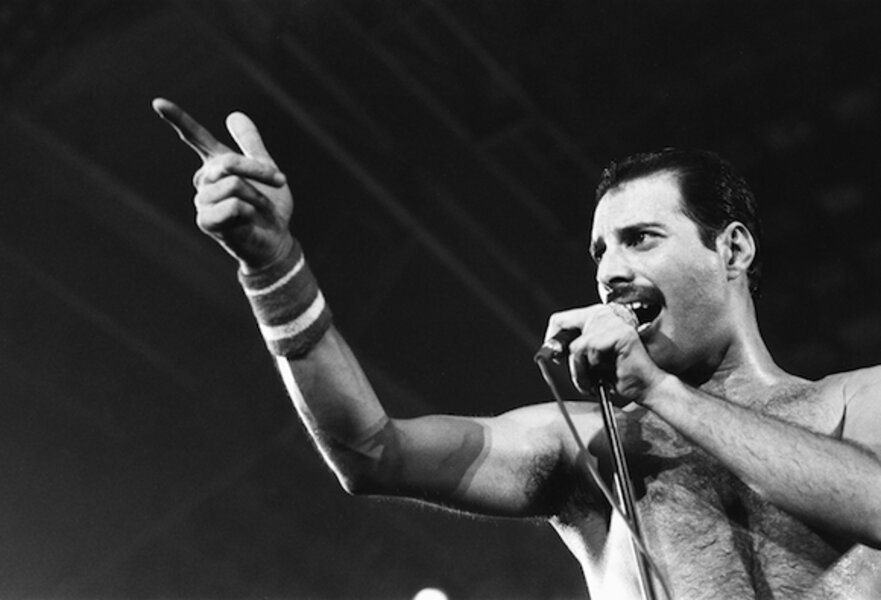Freddie Mercury: The man behind Queen
Loading...
The Google homepage features a series of images depicting Freddie Mercury, the former frontman of Queen. Click on the play button in the middle of the doodle, and you'll be redirected to a 98-second-long animated video, masterminded by an artist named Jennifer Horn, and set to the strains of the immortal Queen anthem "Don't Stop Me Now." The doodle commemorates the life of Mercury, who would have been 65 this week.
So who was Freddie Mercury? Only one of the greatest rock and roll showmen ever to have graced a stage. Born Farrokh Bulsara in Stone Town, Zanzibar, Mercury spent his childhood in Africa and India, before decamping with his family to England. He did time in a handful of rock bands, and in 1970, he, Brian May, and Roger Taylor – formerly of an outfit called Smile – began making music under the name Queen.
"Soon, [Mercury] began his evolution into a world-class vocal talent, right in front of our eyes," May writes today on the Google blog. "Freddie was fully focused, never allowing anything or anyone to get in the way of his vision for the future. He was truly a free spirit. There are not many of these in the world. To achieve this, you have to be, like Freddie, fearless – unafraid of upsetting anyone's apple cart."
In 1973, Queen released its eponymous debut; it was met with warm – but not overwhelmingly enthusiastic – praise. Real success came in November of the following year, with the arrival of the album "Sheer Heart Attack," and the single "Killer Queen." "Sheer Heart Attack," one British critic opined, represented "perhaps the heaviest, rockingest assault on these shores we've enjoyed in some time."
A string of massively successful records followed, along with the emergence of the patented Queen stadium show – led, always, by Mercury's theatrics. (A UK magazine once described Mercury as "a performer out to tease, shock and ultimately charm his audience with various extravagant versions of himself.) Meanwhile, through the late '70s and early '80s, Mercury was writing some of the greatest Queen tunes, "Bohemian Rhapsody", "Somebody to Love", and "We Are the Champions," among them.
"Some people imagine Freddie as the fiery, difficult diva who required everyone around him to compromise," May writes. "No. In our world, as four artists attempting to paint on the same canvas, Freddie was always the one who could find the compromise — the way to pull it through."
According to a former partner, Mercury was diagnosed with AIDS in 1987, although he did not go public with the information until 1991. Mercury died in November of 1991, roughly a day after informing his fans of the diagnosis. "Like a great comet, [Mercury] left a luminous trail which will sparkle for many a generation to come," May wrote on the Google blog today. He included a link to Freddieforaday.com, a fundraising campaign dedicated to eliminating AIDS and HIV worldwide.
For more tech news, sign up for the weekly BizTech newsletter, which ships every Wednesday.





